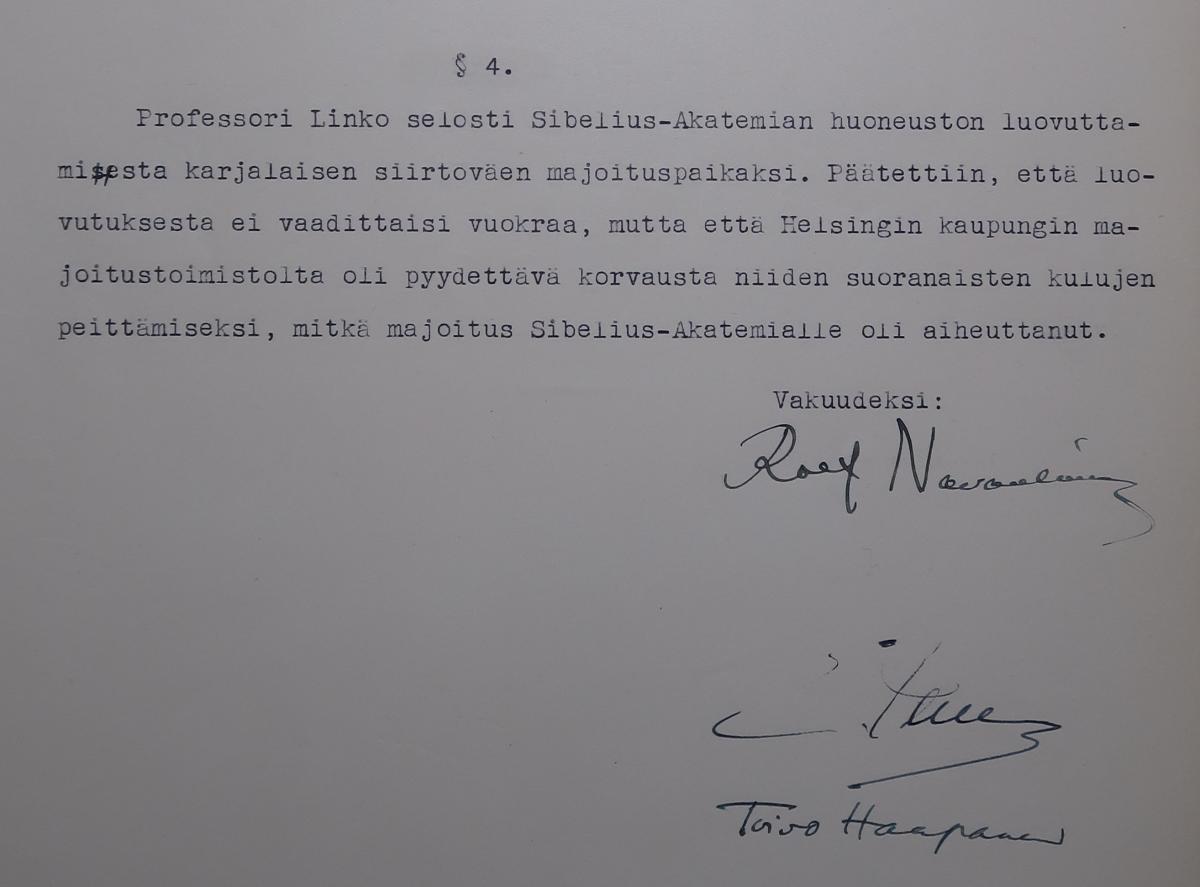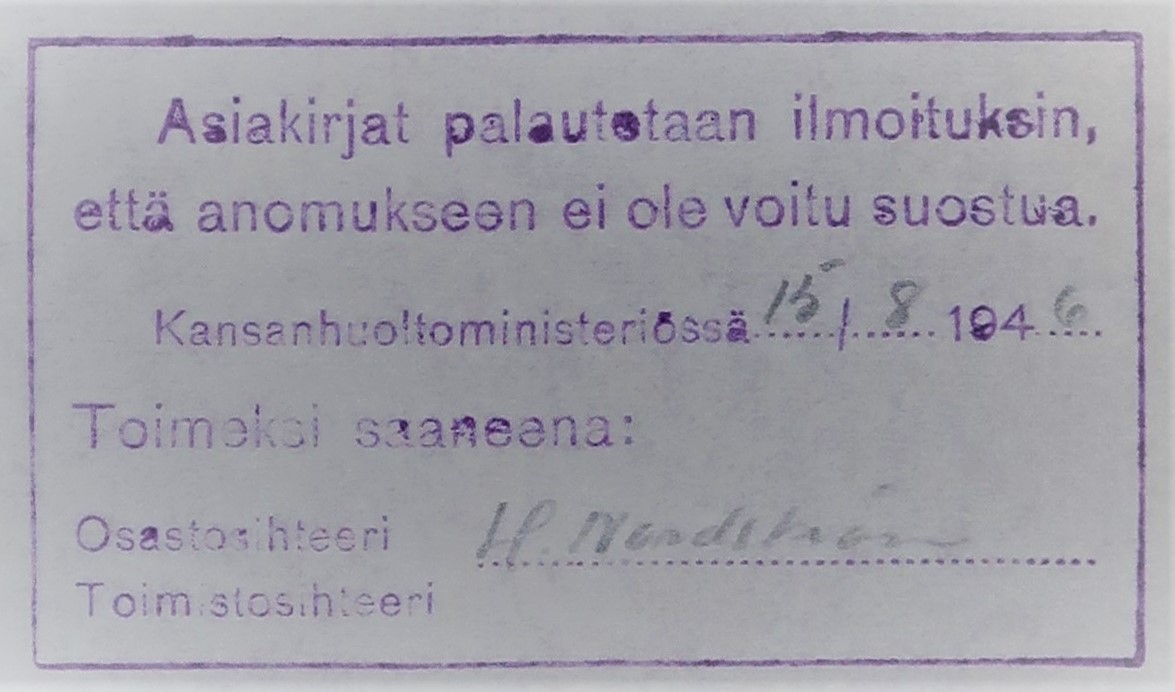The Building in Exceptional Circumstances
Over the decades, the house has faced both bombings and the coronavirus pandemic.

‘We hereby respectfully apply for a purchase permit for 10 kg of lye stone, which we urgently need to fix our building at Pohjoinen Rautatienkatu street after it was damaged in a bombing.’
- An application to the Chemical Department of the Rationing Board 8 August 1945
Helsinki was supposed to host the Olympic Games in the summer of 1940, and both concert halls were reserved for this purpose for concert events. The games were cancelled because of the war, and instead the house was used as accommodation for the Karelian evacuees. In May 1940, the Board of the Sibelius Academy Foundation decided that they would not charge for the accommodation of the Karelian evacuees, but that compensation would be requested to cover the direct costs.
The war practically halted the teaching of music, but concert and other activities continued almost daily throughout the war. The Helsinki Air-Raid Protection Centre considered the concert hall to function as shrapnel protection, but the second and the third door on the left had to be separately protected. During the air raid alarms, the performances in the hall had to be interrupted, but people did not have to leave the room. The small hall, on the other hand, did not provide sufficient protection, so all events in the small hall had to be interrupted during the alarm and the audience had to shelter in the staircase on the Ainonkatu street side. An air raid shelter for at least two people also had to be constructed into the building.
During the war, the house was damaged by bombing. At night on 21-22 March 1943, a bomb fell on the rock behind the Parliament Building, breaking 35 windows in the Sibelius Academy building. At night on 6-7 February 1944, two bursting projectiles fell about 10 metres from the house, causing various types of damage. There were 35 broken window panes on the façade of the first floor and 263 on the other floors. Various door, plastering and paint damage occurred on all floors and in the concert hall. There were shrapnel holes on the façade and a 30 square metre area of the roof was damaged.
During and after the war, there was a shortage of all supplies in Finland, and a separate permit was needed to buy them. For example, in October 1940, the building manager of the Sibelius Academy applied to the City of Helsinki’s Rationing Board for a ‘permission to buy 10 kg of soft soap [and] 2 kg of soap per month to keep the building clean. The building in question has a concert hall for 800 people, which is used practically every evening and, besides, several times on the same day, large halls and stairways, etc.’ In August 1942, a purchase permit was requested for 21 scrubbing cloths, and on 19 September 1945, an updated application gave reasons for needing new shoes for the cleaning lady: ‘Mrs Lempi Snälli, who is the cleaner at our Conservatory, must twice a day visit her workplace, sometimes more often. She is, therefore, very much in need of footwear.’
The corona virus disease COVID-19, which became a pandemic in December 2019, led to the closure of the building and other facilities of the University of the Arts Helsinki in March 2020 from the public, students and staff to prevent the spread of the disease.


Menneisyyden muistia tulevaisuutta varten
Tässä blogissa Riku Hämäläinen kirjoittaa Taideyliopiston muistitietohankkeen vaiheista. Hankkeen tarkoituksena on kerätä entisten ja nykyisten opettajien, oppilaiden ja muun henkilökunnan muisteluita taideopetuksen historiasta, arjesta, toiminnasta, sattumuksista, jne. tulevaisuuden tutkimuksia varten. Filosofian tohtori, dosentti Riku Hämäläinen toimii Historiafoorumin yliopistotutkijana. Hän johtaa muistitietohanketta, johon kuuluu niin uuden aineiston kerääminen kuin jo olemassa olevan arkistomateriaalin saatavuuden parantaminen.
Uusimmat julkaisut
Seuraa blogia